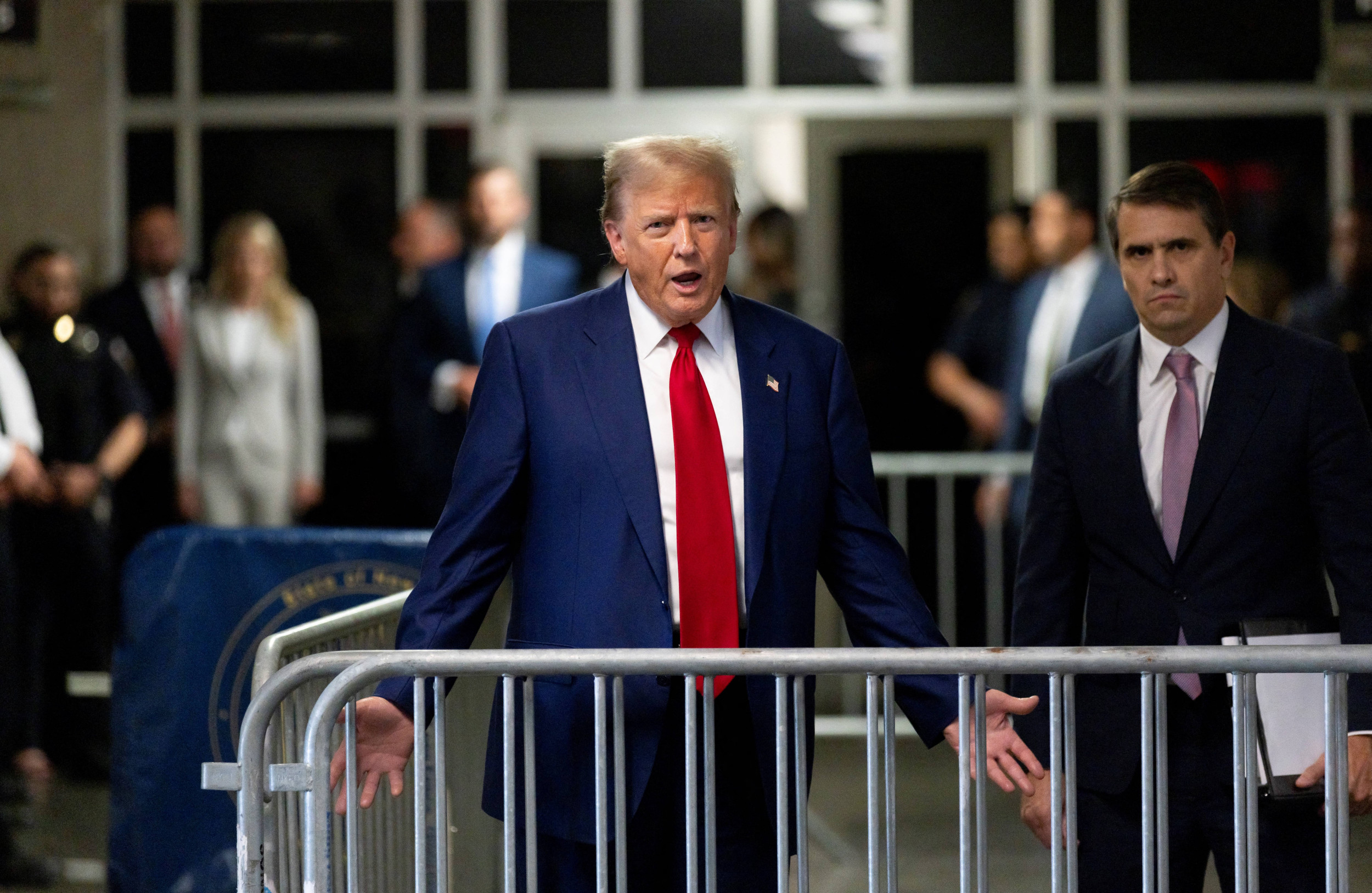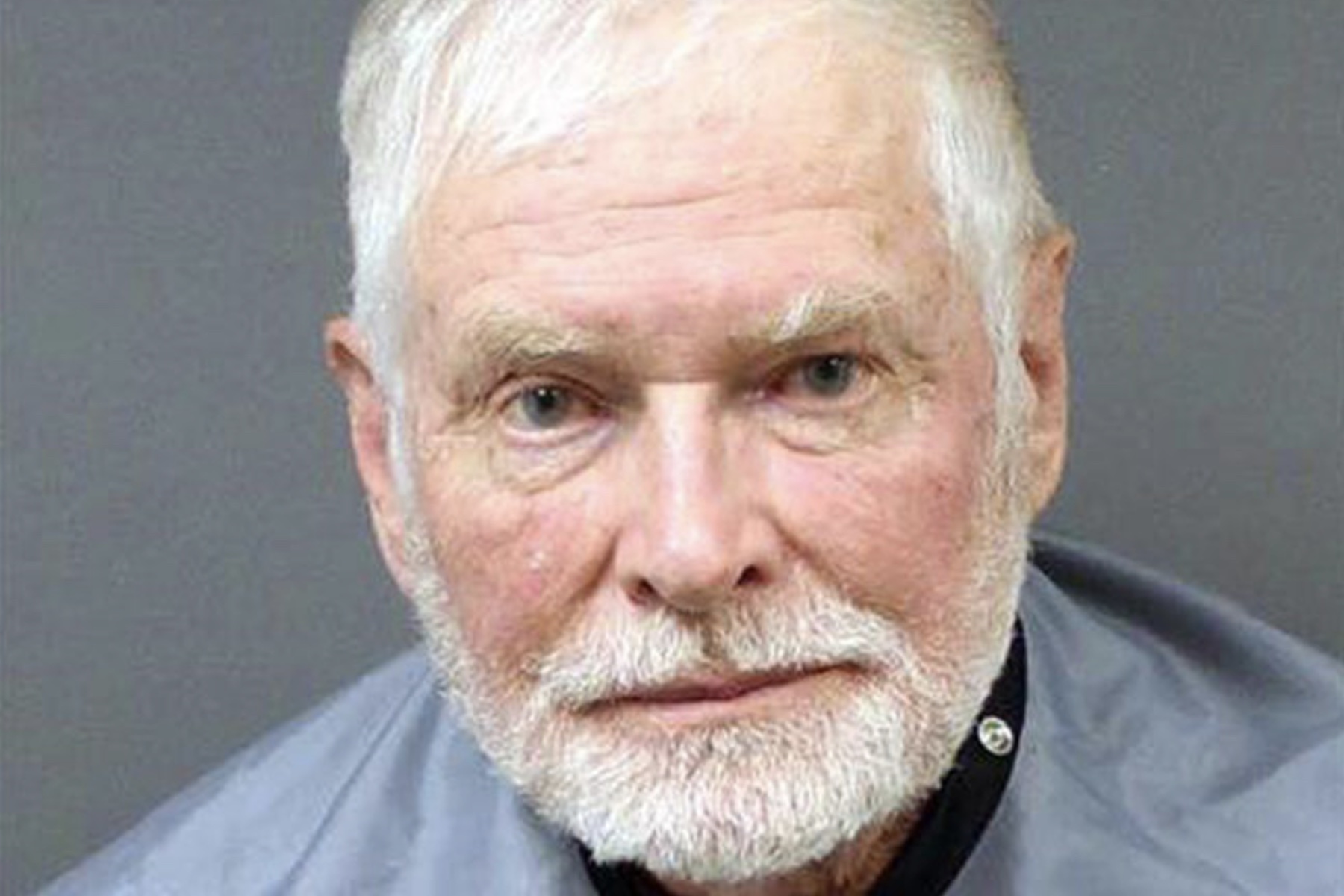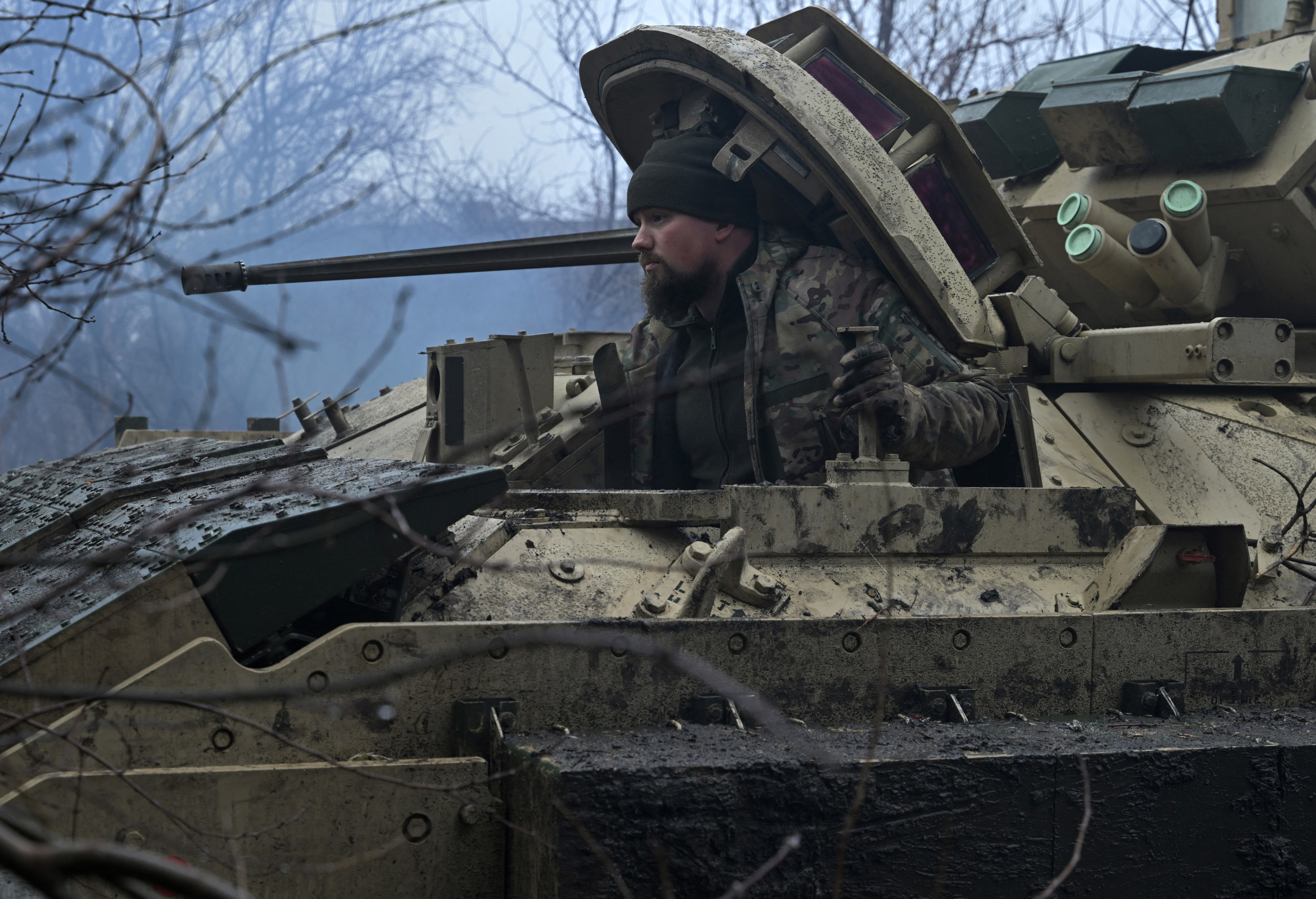When I saw his eyes, I knew I was in trouble. They were the most afraid, tormented eyes I had ever seen. I didn't know that he had a knife until it was in my left lung. Then, it was in my liver. Then, my diaphragm.
Time slowed down during that 90-second attack. I thought I was going to die covered in blood and dirt. All I could think about was what would happen when this was over. I just wanted to say goodbye to my loved ones.
It was February 2009 and I was training before trying to enlist in the Army National Guard. I was concerned I had heart problems, so figured what better way to test my heart than hike a steep mountain. If I died of a heart attack then it wasn't meant to be.
When I reached the summit I was exhausted and began experiencing palpitations. I noticed a large male who appeared to be in distress, but I was delirious with exhaustion, so I just focused on catching my breath.
"You set me up!" he shouted as he approached me.

I had no clue what he was talking about.
What followed was the cheapest, most cowardly attack imaginable. He was built like a wide receiver. I didn't even have a second to catch my breath before this guy was suddenly butchering me like an animal.
I fought back but tripped on a rock, and he jumped on top of me. He stabbed me as many times as he could, mostly in my head and throat.
"This is the end," I thought. "I might as well cause him as much pain as possible."
So I reached up and squeezed his groin with every fiber of my being. That saved my life. He must have been upset that I hurt him—and he pushed me off the cliff.
The last memory I have of the attack is watching my blood squirt in his eyes from a severed artery in my left temple.
To this day, I don't know why this man—who stabbed me 18 times and was later committed to Hawai'i State Hospital—targeted me, other than the fact that I and another of his victims are Japanese.
Lifelong Recovery
I was left with many stab wounds, a broken neck, a fractured skull, epidural hematoma, concussion, broken right ankle, two collapsed lungs, a punctured left lung, lacerated and diaphragm, severed left temporal artery, severed tendons in my right hand, double pneumonia, five pints of blood loss—and I even lost my iPod.
Initially, I had no idea how badly I was hurt. My only concern was my heart. In the ambulance, I asked the paramedic if I had been stabbed in the heart.
"No buddy, but you got stabbed everywhere else," he said.
That was the spark of hope I needed. My heart was still beating. I knew I had a chance.
My month-long experience in the hospital was a combination of horror, beauty, and humor. I had no idea a human could experience such pain, or become so strong.
I couldn't scream because of the breathing tube in my trachea. When my mom told me she loved me from the bottom of her heart, a single tear rolled down my right cheek, but I couldn't wipe it away. I couldn't move.
My recovery is a lifelong process. There were no qualms about leaving the hospital as a
23-year-old kid. I knew my life would be marked by mental and physical torment, but I was alive, and I would show my gratitude by helping others.
There were a few setbacks. I needed cervical fusion in July 2009, when my fracture became unstable, and was rear-ended twice while recovering from a broken neck.
The first accident was 10 minutes after my mom and I found out the state had made a deal with my assailant. He would be acquitted due to temporary insanity.
The second accident was far worse. I had just gotten a great job at my favorite restaurant when I was hit at high speed by a rubbernecker. A broken neck is a life-changing injury; getting rear-ended while recovering is not something I recommend.
Overall, it was a miraculous recovery. A lot of people worked hard to save my life and get me back on my feet. Good Samaritans, paramedics, firefighters, friends, family, and, at the top of the list, my mom. She recycled bottles and cans so she wouldn't lose her apartment in San Jose while she took care of me.
I received lots of physical therapy, and help from people all over the world in the form of prayers and donations. I went back to school, graduated with a 4.0 GPA and $90,000 in scholarships and grants, became a published author, fought for victim's rights, assisted survivors during their trials, gave speeches about my survival, played golf all over the country, and lived my second life to the fullest.
I think I handled the trauma from the attack as well as could be expected. I was grateful to be alive and that gratitude allowed me to withstand tremendous suffering.
I didn't even think to ask for more drugs when I was in critical condition, I just thought extreme pain was part of the survival package. I probably should have.
Betrayal
The bigger issue for me was the betrayal by the justice system. Just three years after trying to murder two people in the most brutal way imaginable, my attacker was allowed to leave the state hospital and attend college courses unescorted.
No one warned me. My mom had to find out on the news. She hasn't been the same person since seeing my attacker on TV, being granted permission to further his education without security guards.
I don't have any issue with the insanity defense, but public safety trumps all. I believe his reintegration into society was deemed more important than justice and public safety.
My attacker tried to kill Japanese men because he thought they were government agents sent to hurt him. I believe him. I saw his eyes—no one knows better than me that he was legally insane.
I have no clue what he actually thinks of Japanese people, and I don't care. He targeted two of us and barely any mention of this was made in the media because he was insane.
I'm proud to be Japanese and Scandinavian, but any racism I've experienced stems from my Japanese heritage, so you can imagine my outrage that two Asian-Americans were attacked and so little was made of the racial element of this attack.
I've been fighting for victims' rights ever since so that others don't have to experience what I did.
An Unexpected Diagnosis
For a long time after the attack, I was thriving. But then, in 2020, I noticed fat wasting in
my limbs. It started in my hands, feet, and legs, and worked its way through my entire body.
The fat loss was a nuisance at first, as I lost cushioning in my palms, feet, arms, and legs. Holding a golf club became painful, crossing my legs and even turning doorknobs caused pain. But life changed when the fat wasting reached my butt. Yes, my butt.
Sitting has been removed from my life. Imagine your day without sitting. I haven't laid on my back in two years, or sat down without an inflatable wheelchair cushion or three pairs of padded underwear in two years.
The fat wasting started destroying my joints and my spine. You have no idea how important fat is until it's gone.
I received a diagnosis of lipodystrophy from an endocrinologist, which is an extremely rare metabolic disorder that causes abnormal distribution of fat. There are different forms, either genetic or acquired. Some affect parts of the body, some affect the entire body. They all ravage your body and destroy your organs.
Life with lipodystrophy is usually shorter and extremely painful. When I say painful, remember how I got stabbed and pushed off a cliff? Well, the chronic pain from my attack was a walk in the park compared to the pain of unnatural fat loss.
Receiving a diagnosis was a relief, a sense of validation, but my journey is only just beginning. I now need a diagnosis from a lipodystrophy expert to move forward with my life, but that quest over the last two years has been an absolute nightmare, filled with enough medical gaslighting to power a small city.
I'm still looking for the cause of this disease. It's believed to be caused by catastrophic injury, reaction to medication, autoimmune disorders, and significant infection. Many
cases are idiopathic.
Social media has been indispensable in finding a sense of community and medical knowledge for something so rare and vicious. We support each other, we listen to each other, and most importantly, we believe each other.
No matter the cause, once the disease starts, it doesn't stop. I face losing every ounce of fat on my body, and that includes my face. I like my face and I don't want to lose it; I've liked it a lot more since it became covered with scars.
I'm like the Asian Harry Potter; we both survived the unsurvivable, except I'm real and my scars are way better.
Uncontrollable diabetes and liver dysfunction are guaranteed. High triglycerides, high cholesterol, pancreatitis, kidney failure, liver failure, and heart failure are significant risks.
I don't fear early death, every moment I've spent on this earth since I looked into that lunatic's eyes has been a miracle, and I've squeezed so much life out of my second act.
No, it is a life of unrelenting pain that I cannot and will not accept.
There's no cure, but there is a treatment called leptin replacement therapy. It does not replenish fat, but can help improve glycemic control and decrease triglyceride levels.
I won't qualify for it until I have severe metabolic abnormalities, which could be many years from now. It costs $900,000 per year, so I hope I have insurance if the need arises.
Trying to Help Others
My daily life has changed substantially since I developed this disorder.
I love cooking, but that's become tough because I don't have any fat left on my hands and fingers. Golf is sadly a thing of the past, but I'm proud to say that I became a better golfer after my attack than I was before. Isn't that awesome?
Somehow, I'm still working at my awesome job selling lava photography in Hilo. I have accommodating bosses who treat me like a son. If I'm not at work, I'm in bed, lying on my stomach.
I spend most of my time watching Shohei Ohtani—an inspiration—play baseball, and learning as much about the world as possible. No matter what we endure, we must always be learning.
I try to help as many people as possible. I'm trying my best to guide others with lipodystrophy through this process. I learned to take pleasure in the simple things in life.
Physically and emotionally, I'm still in shock. To watch your body devour itself in the prime of your life, when you've already overcome hell is not a pleasant experience.
Silly me, I thought getting stabbed and pushed off a cliff would be my biggest test. That was child's play. I survived a most violent attempted murder and I overcame it. That was easy compared to lipodystrophy.
Now, I feel like I'm at a fork in the road, and the path I choose will be the most important choice I will ever make. I will either hide from the world and waste away in peace, or I will get off my no fat-having-butt and do what I believe I was sent here to do—help people.
That is the one big silver lining to my health nightmare: I can now relate to nearly every person facing adversity. Surviving extreme violence allowed me to reach those who've experienced trauma, but I didn't understand pain until I lost my health.
I get it now. And it sucks.
I can reach so many people with my story of survival and that's what I intend to do, whether I'm speaking to kids across the country or writing something deep while laying on my stomach from the comfort of my room.
I Have No Hate
Nearly 15 years on from my attack, I feel nothing for my assailant. I have no hate for him and I appreciate the solidarity. He was sick in the head. His eyes were more scared than mine. Granted, they were dripping with my blood, but he was terrified.
I hope he gets the help he needs and doesn't hurt anyone else. If I saw him on the street, would say nothing. I said all I needed to say during his acquittal hearing, when I looked him in the eye and reminded him what he did to me and my family, and my future.
My mom is a genius. The prosecutors were not encouraging me to give an impact statement whatsoever and wanted this thing to disappear in a hurry.
But she said: "Oh no, you're not. You have to face him. You will regret it for the rest of your life if you don't take this opportunity." She was right.
My attacker took a lot from me. He took my youth, my innocence, my health, and the right to fight for my country. But he did not take my life.
He did not take my spirit. He did not take my kindness or my humor. I became tough as nails, but I did not become hard. It is my mom, my hero, who has borne the brunt of the fallout from my attack.
And for all those battling chronic illness, not just lipodystrophy, you're not alone, I'm right here with you. You must be your own advocate at all times. Come prepared. Do your homework and don't be surprised if you know more about your illness than your doctor.
Doctors are amazing, they saved my life, but they are humans just like us and medicine is a practice, never forget that. Find something you love and hold on to it.
Don't take crap from anyone, including loved ones. If your friend dismisses your pain, that person is not your friend.
Above all, remember this: never, never, never give up. I haven't. That means you're not allowed to, either.
Nicholas Iwamoto sells lava photography at Extreme Exposure Fine Art Gallery in Hilo and he is also a professional knitter. Knitting has been an integral part of Nicholas' life since his attack. He sells beanies and uses the money to pay for medical expenses, and mental and physical therapy. You can reach Nicholas by email.
All views expressed in this article are the author's own.
As told to Monica Greep and Carine Harb.
Do you have a unique experience or personal story to share? Email the My Turn team at myturn@newsweek.com.
Uncommon Knowledge
Newsweek is committed to challenging conventional wisdom and finding connections in the search for common ground.
Newsweek is committed to challenging conventional wisdom and finding connections in the search for common ground.
About the writer
Nicholas Iwamoto sells lava photography at Extreme Exposure Fine Art Gallery in Hilo and he is also a professional knitter. ... Read more
To read how Newsweek uses AI as a newsroom tool, Click here.








